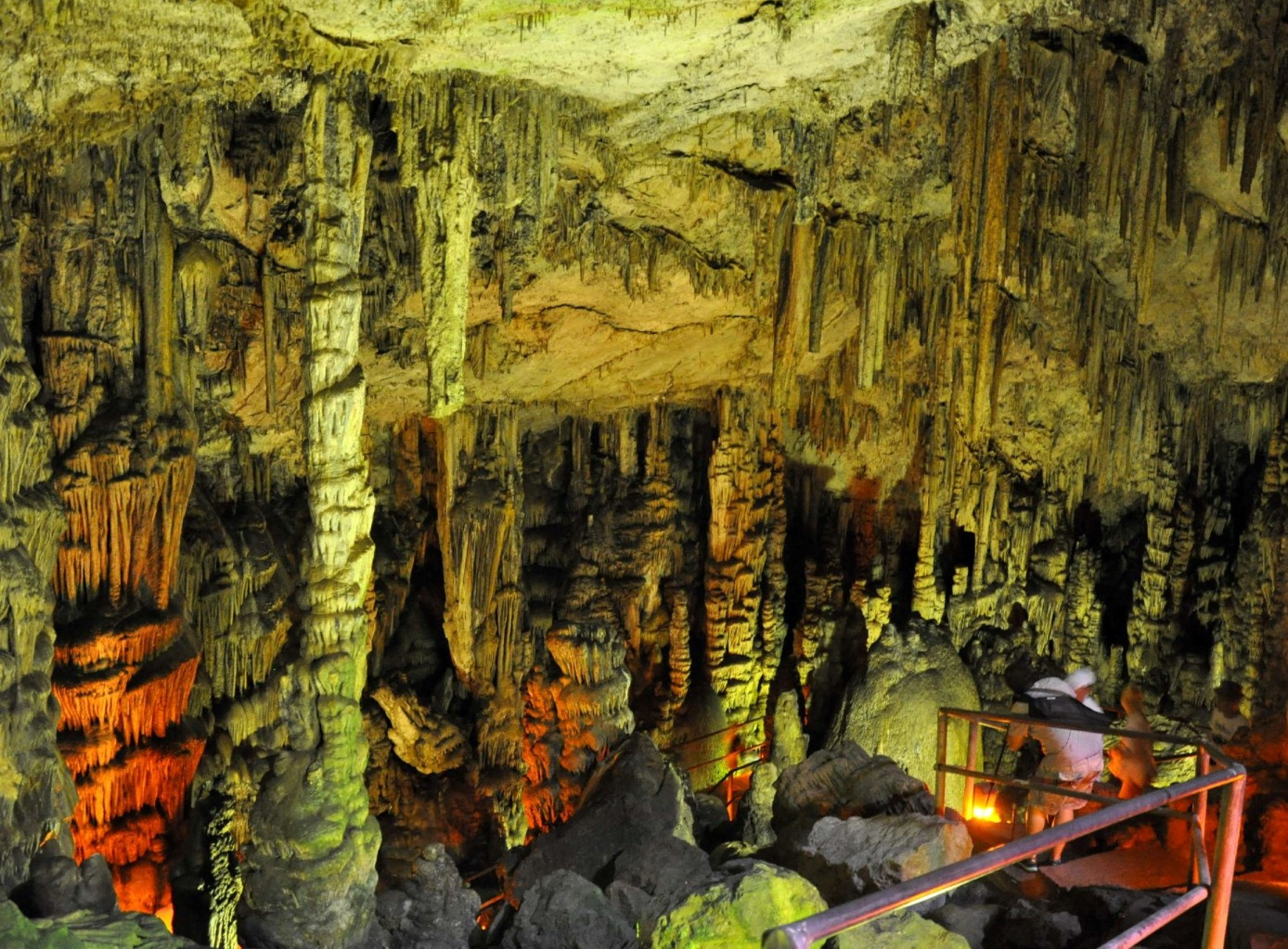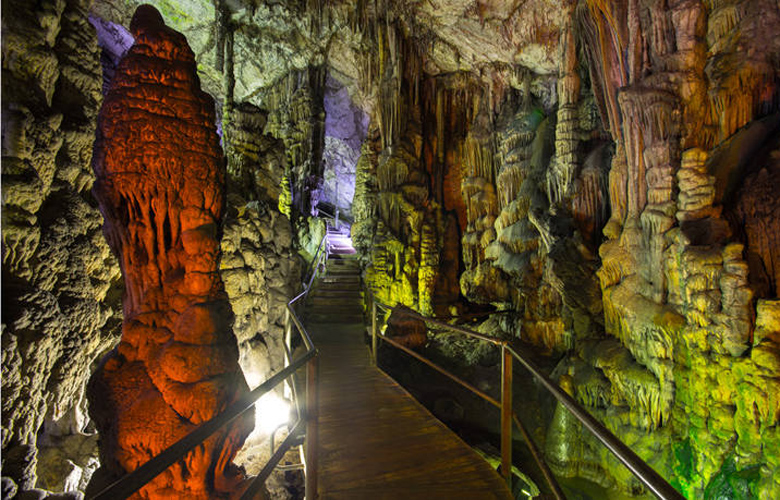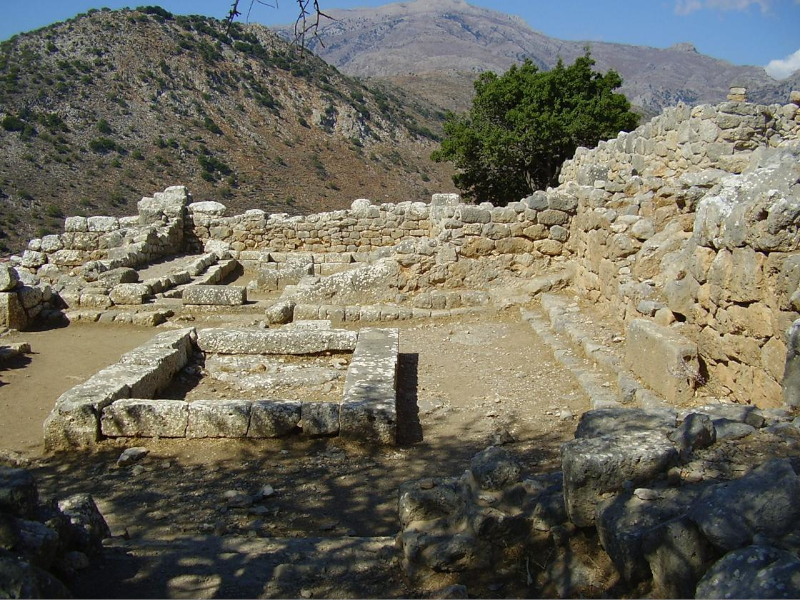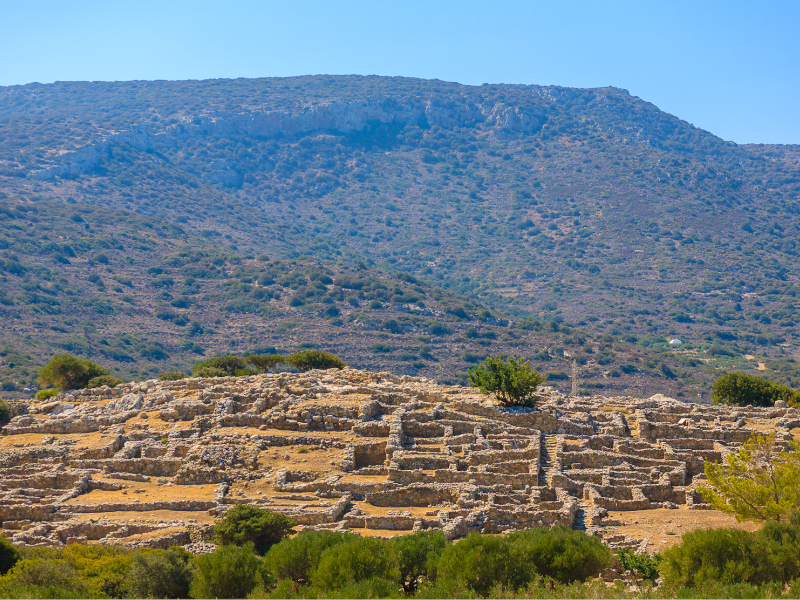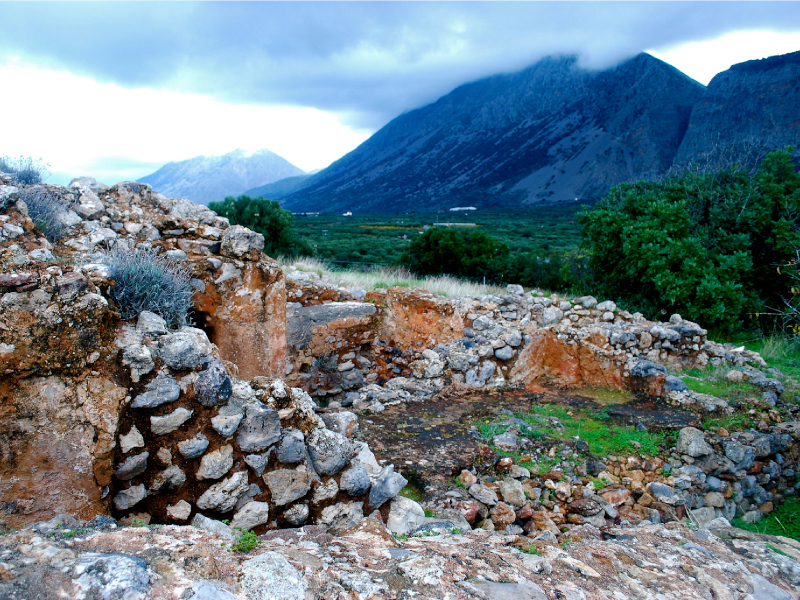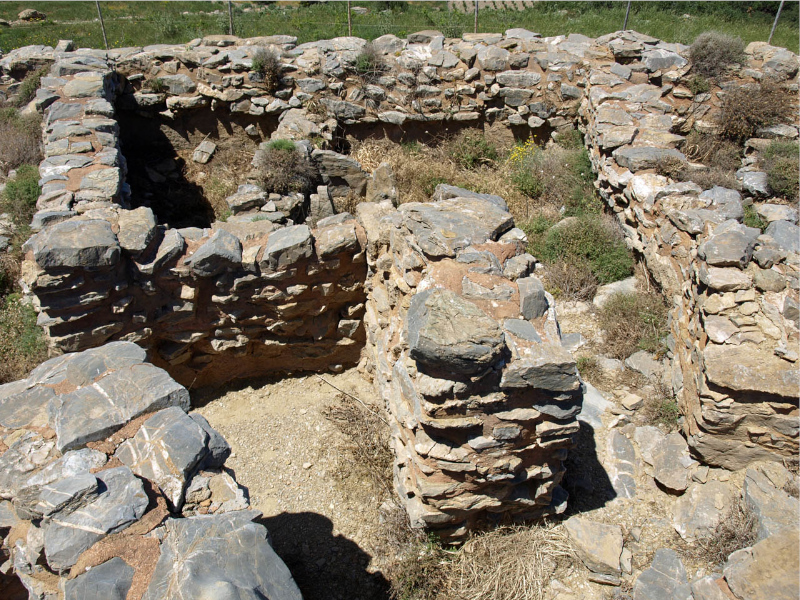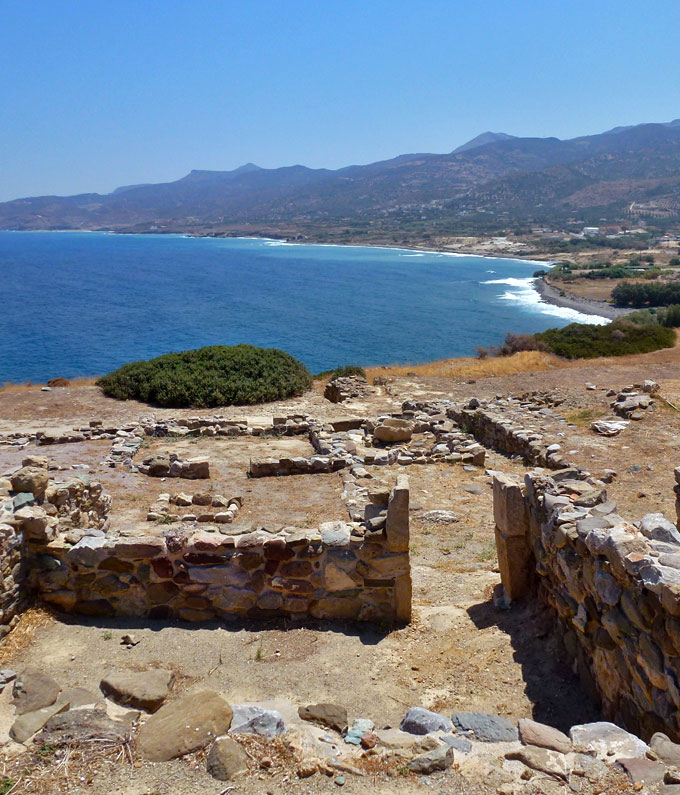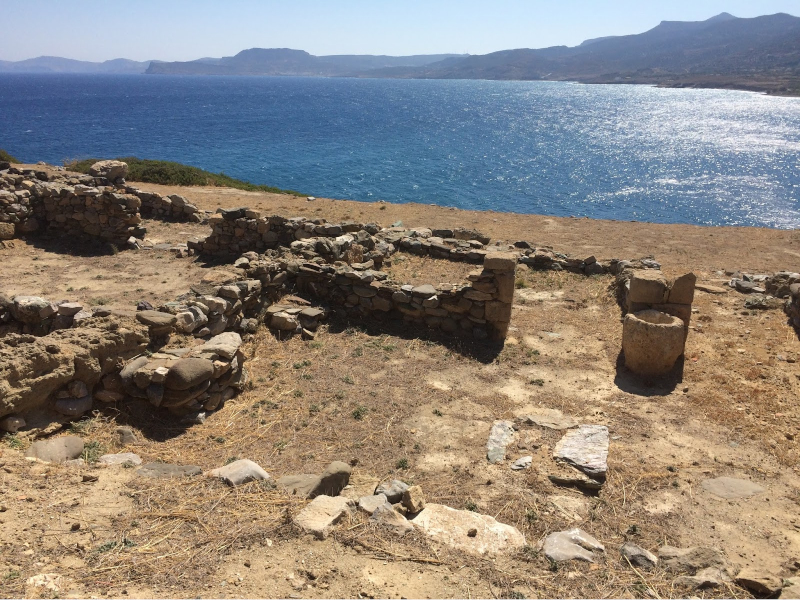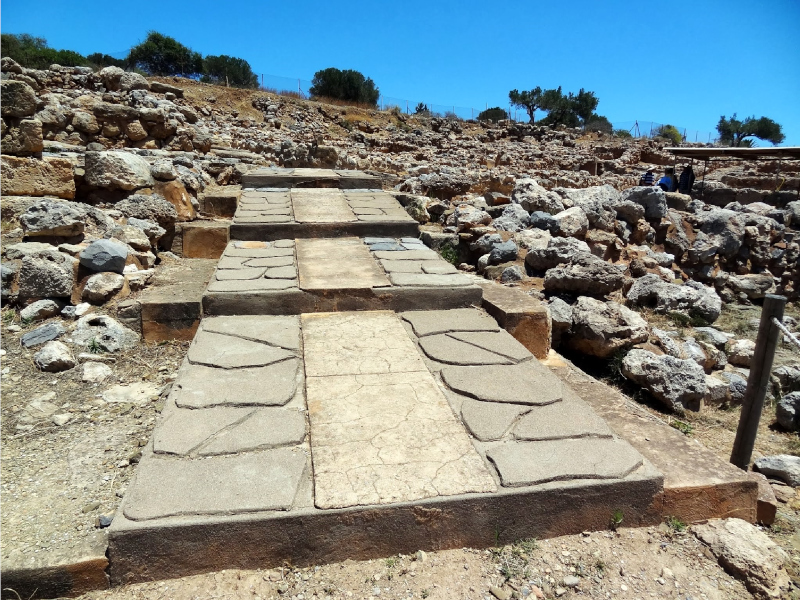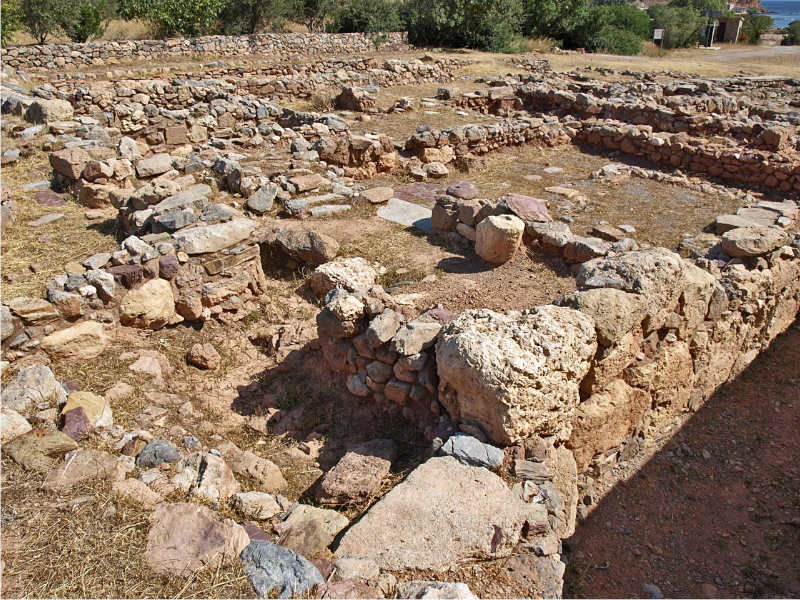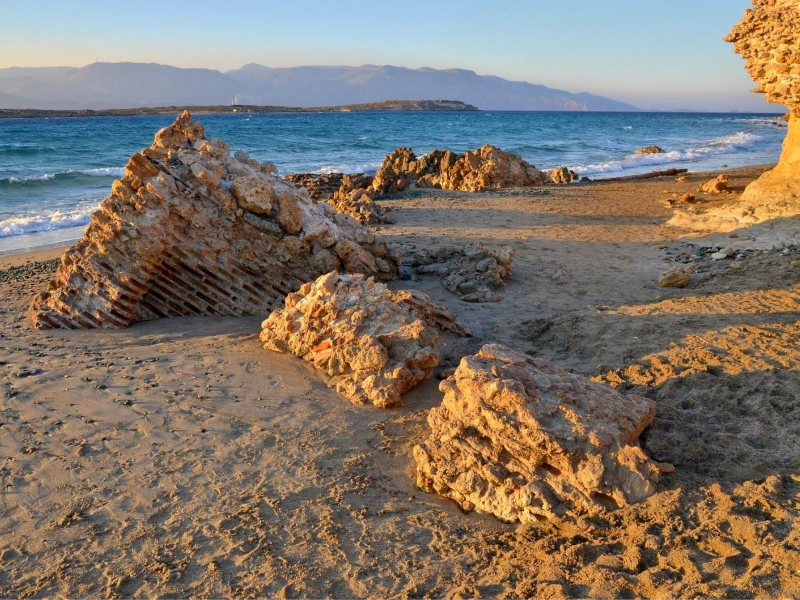Archaeological sites
Diktaios Andros
In this cave the Dactyls (Curetes) together with the goat Amalthea took over the care of the newborn “Zeus” from Rhea and while Amalthea engaged in his upbringing.
In the Minoan era, Zeus was worshiped in Diktaio Andro (Psychron Cave) as a god with the double ax and has a chthonic character
Inside the Dikteon Cave
The sun’s rays cannot penetrate into the cave and the humidity can reach 85%, while absolute silence prevails.
On entering the Dikteon Cave, you find yourself in the antechamber and immediately you can fill the difference in temperature.
In the antechamber roost rock doves and other birds, while deeper in live species from arthropods to the Long-Eared Bat.
In general, the cave has ideal conditions that make it an important habitat, rich in animal life.
In the antechamber of the Dikteon Cave were discovered the foundations of a built altar and the remains of offerings.
As you descend into the cave you will see the ancient walls of the temenos, the sacred space.
The Dikteon Cave consists of five chambers large and small. The most impressive sight is the lake at the lowest point, surrounded by massive stalactites and stalagmites.
To reach the lake, suitable shoes are recommended.
At the lake, you will see the “Mantle of Zeus”, a stalactite that hangs over the lake like a chandelier.
At the back of the lake, you can easily see a small chamber of the Dikteon Cave, in which it is said that the Father of the Gods was born.
History of the Dikteon Cave
The archaeological finds to date have shown uninterrupted human presence in the Dikteon Cave for the last 6,000 years, onwards from the end of the Neolithic period, i.e.
It may have been inhabited and used for burials, as a cult center from the Minoan to the Archaic Period, while worship at the cave continued sporadically until Roman times (1st c. BC-1st c. AD).
From the 16th century AD to 1883, the Dikteon Cave was used as a shelter by local shepherds and hunters.
In 1886 the Italian archaeologist Federico Halbherr carried out the first, small-scale excavations.
The first systematic excavation began in 1899 under the British archaeologist and Director of the British School of Archaeology at Athens, David Hogarth.
Archaeological Site in Lato
“Lato or Etera”. Lato was one of the most important Doric city-states in Crete, although it must have existed before the “Coming of the Dorians”. It is built on a saddle between two hills, at a site protected by possible attacks but also provide supervision over a large area of the Mirabello Bay. It is possibly mentioned on the Linear B tablets as RA-TO. It was named after Leto (Lato is the Doric type), mother of Apollo and Artemis, although the main goddess worshipped in the city was Eileithyia, who was also depicted on the coins cut by the city. Lato was the birth-place of Nearchos, the admiral of Alexander the Great. Before the end of the 3rd century B.C., the inhabitants of Lato participated in the League of the Cretan cities and shared the same laws.
Archaeological Site of Gournia
Gournia, the ancient name of which remains unknown, is the most typical example of an excavated medium-sized settlement of the Minoan prime period (Late Minoan Period I: 1550-1450 B.C.). It is in a very good condition so they called it “the Pompeii of Crete”. It is built on a low hillock, close to the sea, at the Isthmus of Ierapetra. The first inhabitants settled there during the early Minoan Period III (2300 BC). There are still some remains of the Middle Minoan Period (2000-1600 BC), while at the end of this period the palace was constructed, but was destroyed along with the surrounding city in 1450 BC, when the same thing happened to all the Minoan centers. Fifty years later, there was a period of “reoccupation” of the area. The settlement was finally abandoned in 1200 BC.
Archaeological Site of Vasiliki
The settlement of Vasiliki is one of the first Minoan settlements with town-planning. It occupies the top and slopes of a low hill near the village Vasiliki, in the vicinity of the Minoan settlement of Gournia. The first settlement dates back to the Early Minoan II period (2600-2300 B.C.) and owed its development not only to the strategic position, controlling the Isthmus of Ierapetra, but also to the neighboring fertile plains. The central building of the settlement was destroyed by fire in around 2300 B.C. The hill was again occupied in the Middle Minoan period as attested by a building of the period (2200-1900 B.C.), while scant traces of habitation date to the Roman period.
Archaeological Site of Hamaiziou
The House of Hamezi was discovered in 1903 under the direction of St. Xanthoudidis while in 1907 D. Mackenzie made accurate remarks in his excavation report regarding the architectural design of the building. In I971, a new research conducted by the Department of the Antiquities in Eastern Crete under the supervision of the Professor Mr. Davaras, revealed new evidence which altered or reinforced the previous conclusions. Other remarks regarding the usage of the building were made by St. Alexiou and N. Platon.
Archaeological Site in Petras
On a low hill (h. 40 m.) by the sea lies an important Minoan settlement. It had a large harbour and was the centre of an area bordered by Chamaizi on the west, Praisos on the south, and Analoukas on the east. Despite the evidence for habitation in the last phase of the Neolithic period (3500 B.C.), the first settlement is dated to the Early Minoan II period (2600-2300 B.C.). It continued to be inhabited until 1450 B.C., when it was destroyed, along with the other Minoan centers. A short reoccupation occurred during the Late Minoan III period (1400-1300 B.C.). The settlement flourished in the Old Palace period (2000-1650 B.C.), when the central building of palatial character was built on the top of the hill; it reached a peak, however, in the New Palace period (2000-1450 B.C.) when many alterations of the buildings took place. In the 12th-13th centuries A.D. the top of the hill was occupied by a cemetery, of which 32 graves have been excavated.
Archaeological Site of Trypetos
Eteia or Etis. On a small penisula called Trypetos, 3km to the east of modern Sitia lies a city of the Hellenistic period (middle of 4th – middle of 1st century B.C.), which most likely occupied the whole peninsula. Probably, it was identified as the ancient city of Sitia, called Eteia. A Hellenistic dockyard has been uncovered at the east coast of the headland. In 1967, on the eastern coast of the peninsula, was found a boat station of the Hellenistic period. It is known that in 1960 the owners of the land created plots for cultivation using digging machines which caused severe damage to the buried antiquities. Since 1987 a systematic excavation has been conducted by the Ephorate of Antiquities, under the direction of N. Papadakis.
Archaeological Site of Zakros
The Minoan palace of Zakros was the fourth largest on Crete, located on a strategic position and was an important trading centre between the eastern countries as indicated by the evidence found: Tusks of elephants, earthenware, copper, etc. The palace was an administrative centre of worship and trading.
The palace was built in two phases: the older palace was built about 1900 BC and the later palace about 1600 BC, these were destroyed in 1450 BC at the same time as the other Minoan palaces. The palace became the center of administration, religion and trading.
It was surrounded by the town and the area was not reconstructed apart from a few cultivations. Tombs were found in a cave on the side of the “Gorge of the Dead”, as is named which starts from Ano Zakros and leads to Kato Zakros.
Archaeological Site of Palekastro
In the area of Palekastro, the most eastern point of Crete, excavations have found a settlement which flourished during the Late Minoan period (1550-1220 BC), although evidence shows earlier occupation of the the Early Minoan and Middle Minoan period (3000-1550 BC), mainly cemeteries, including well-structured “ossuaries” and ruins of quite large residences. Habitation stopped at the same time that Zakros was deserted (1450 BC). A recapture occurred during the Late Minoan III period (1300-1200 BC).The city occupied an area of more than 50,000 square meters, it was still and densely populated.
Archaeological Site of Lefki (Koufonisi)
The island of Lefki is mentioned by Plinios. A special reference appeared at the inscription known as the “Diaitesia (arbitration) of the Magnetes”, built in the facade of the catholicon (main church) of the Toplou Monastery. The inscription refers to the conflict between Itanos and Ierapytna. Lefki was an important station of sponge fishing and mainly of murex shells processing, from which the famous, precious and expensive purple dye was extracted; moreover, its position was strategic most importantly for the ships that moored on the south-east coasts, and as a result became a reason of conflict between the two cities. Itanos was finally justified.



